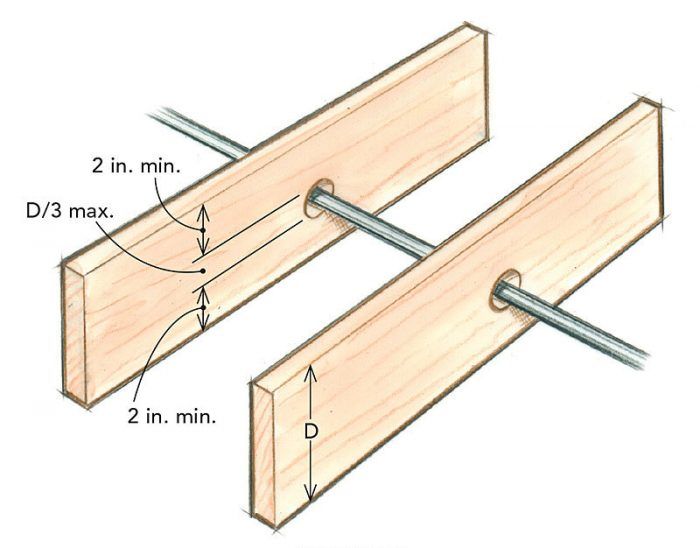Running pipes through joists
Follow these guidelines for drilling and notching solid-lumber floor joists for plumbing pipes.

Q:
My husband and I are replacing a tub, and the 2-in. drain needs to be routed through two 2×10 joists. Can my husband drill through the joists to run the new pipe, or will that weaken them?
Rose Sagady via email, None
A:
Editorial adviser Mike Guertin replies: The International Building Code (IRC) has specific guidelines with illustrations for drilling and notching solid-lumber floor joists. (Engineered floor joists can be drilled only according to their manufacturer’s guidelines.) The code specifies the maximum size of the holes you can drill or the notches you can cut, where you can and can’t place them, and how far apart they can be spaced.
The maximum allowable diameter of a hole in any solid-lumber joist is one-third of the joist’s depth. Notches can’t be deeper than one-sixth of the joist depth. In the case of your 2×10 joists, the maximum diameter is 35⁄64 in. (91⁄4 in. divided by 3). You also have to leave at least 2 in. of solid wood between the top and bottom edges of the joist and the edges of any hole. That gives you a 5 1⁄4-in. area in the middle of the 2×10 joist where the hole can go. Although notches aren’t allowed in the center third of a joist’s length, you can drill holes anywhere along the length of the floor joist in that 5 1⁄4-in. area provided there are no other holes in the joist or notches along its top or bottom. If there are other holes or notches, keep at least 2 in. between the edge of the new hole and the edge of existing holes or notches.
Even though the outside diameter of the pipe you’re using is only 21⁄2 in., to make sliding the pipe into the holes easier, I recommend drilling the holes a little bit larger—maybe 3 in.—and using a hole saw or auger to drill them rather than a reciprocating saw. The risk with a reciprocating saw is that the blade will track off course and may impinge on the 2-in. no-cut areas at the top and bottom of the joist.






